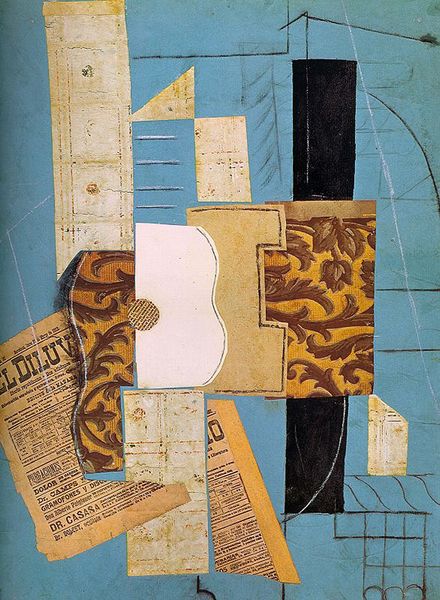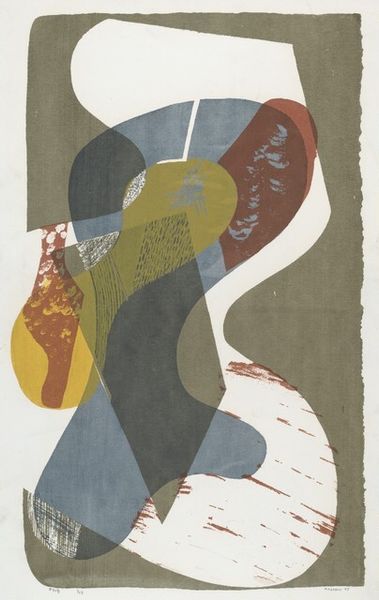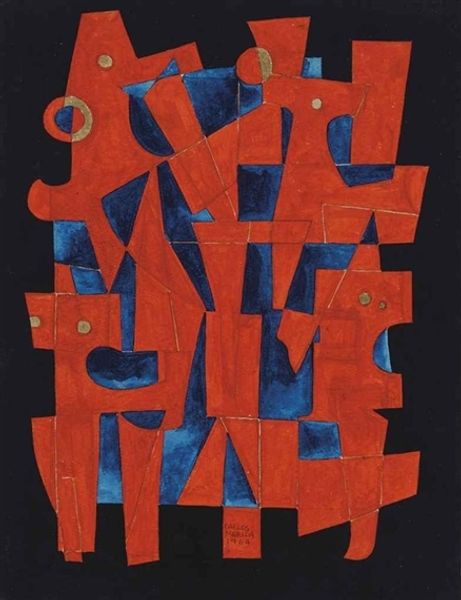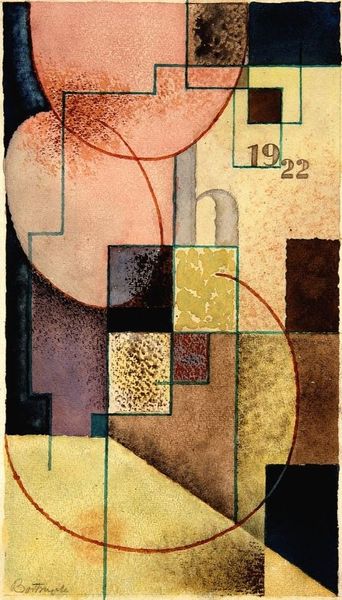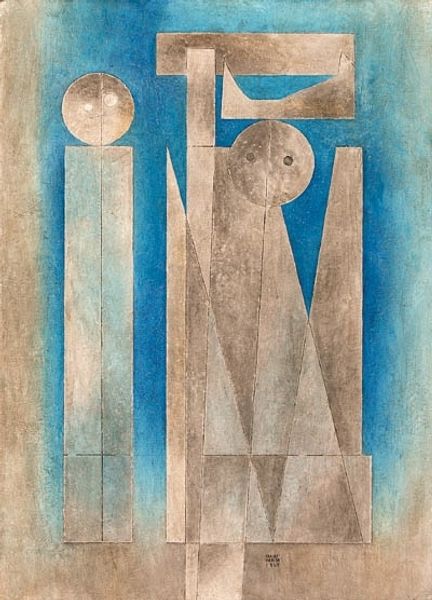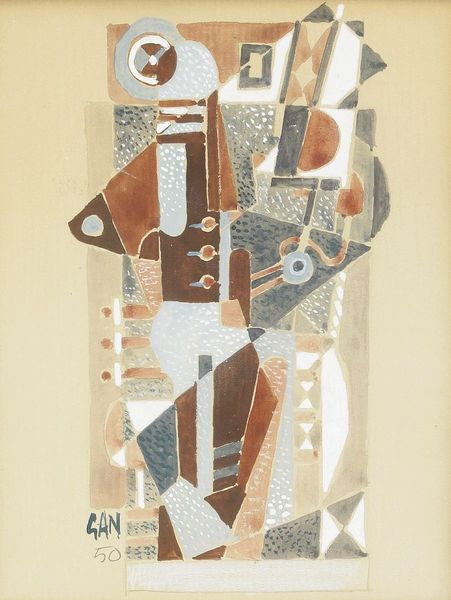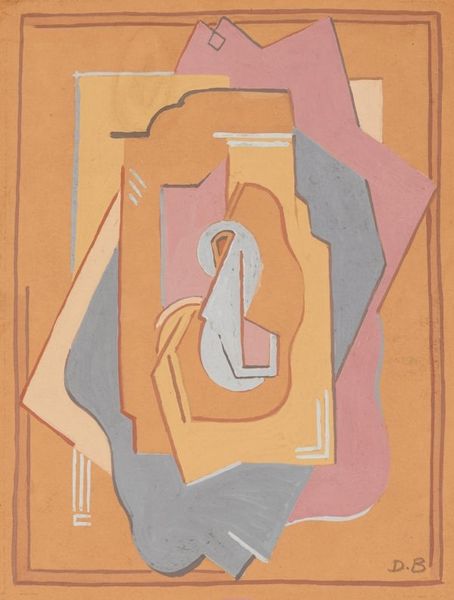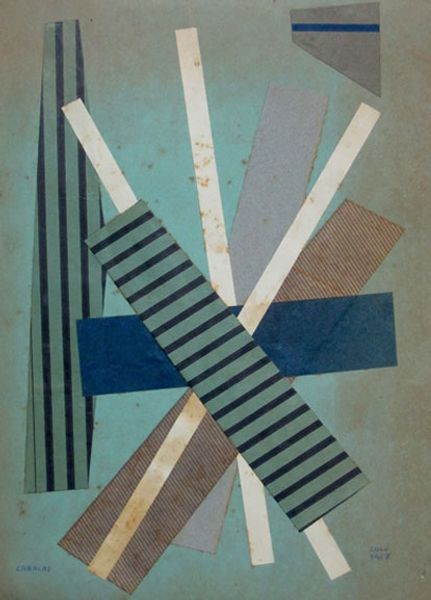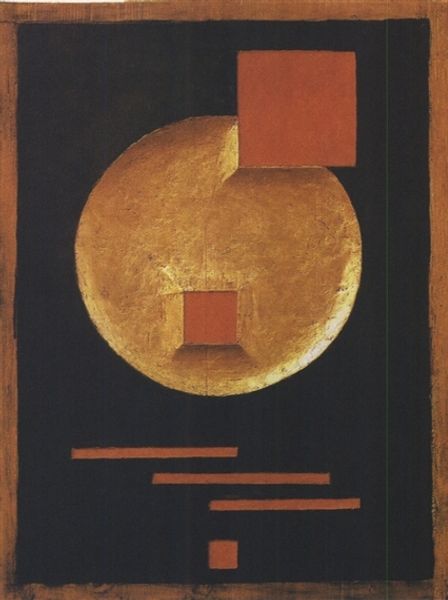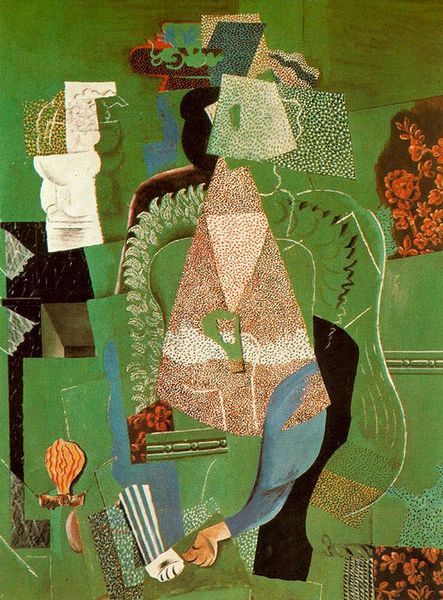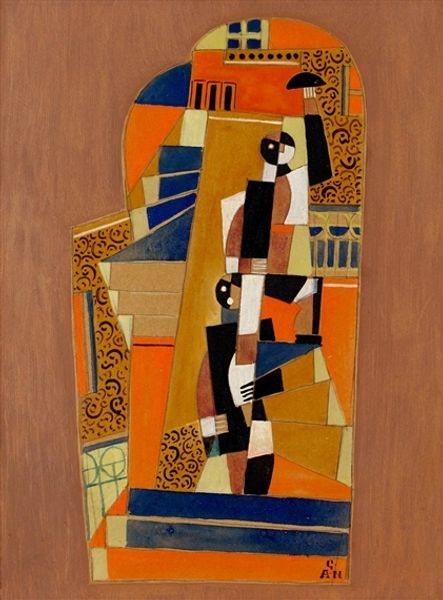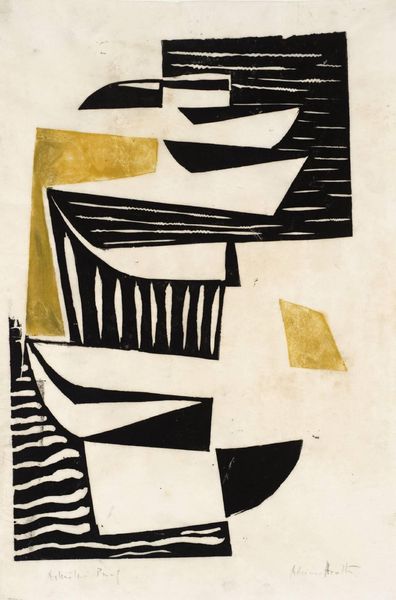
mixed-media, collage
#
cubism
#
mixed-media
#
collage
#
geometric
#
abstraction
Copyright: Public domain US
Editor: Here we have Picasso’s "Guitar, Sheet music and Wine glass" from 1912, a mixed-media collage. The patterned wallpaper in the background seems to be in stark contrast with the geometric shapes composing the foreground, almost fighting for attention. How do you interpret this work? Curator: This collage emerges during a pivotal period in Picasso's career, reflecting not only the artistic innovation of Cubism but also the turbulent socio-political climate of pre-World War I Europe. How does the fragmented representation of everyday objects – the guitar, the sheet music, the wine glass – challenge traditional notions of representation and perception, especially during an era grappling with shifting power dynamics and social upheaval? Editor: It's almost like Picasso is deconstructing reality. He presents all these familiar objects but they seem somehow… incomplete? Curator: Exactly! Consider the role of collage itself. Picasso appropriates these elements from popular culture: wallpaper, newsprint – elements often associated with domesticity and the everyday experience of the burgeoning bourgeoisie. What commentary might he be making about the relationship between "high" art and "low" culture by incorporating them in his art? Editor: That’s interesting. It’s like he's elevating these ordinary scraps. Is it also a way of making art more accessible? Curator: It could be seen that way. Perhaps it also speaks to the ephemerality of life, how things are not permanent but in constant transformation. It prompts us to rethink these rigid boundaries. What does the "still life" even mean here? Editor: I see your point! Thinking about art in context of the larger social landscape provides another layer of understanding of the piece. I never considered the socio-political influences on cubism. Curator: Exactly. By understanding how those outside forces influenced the artwork we can read it through a more thoughtful and nuanced perspective. Hopefully it is more interesting for our listeners now as well.
Comments
No comments
Be the first to comment and join the conversation on the ultimate creative platform.
